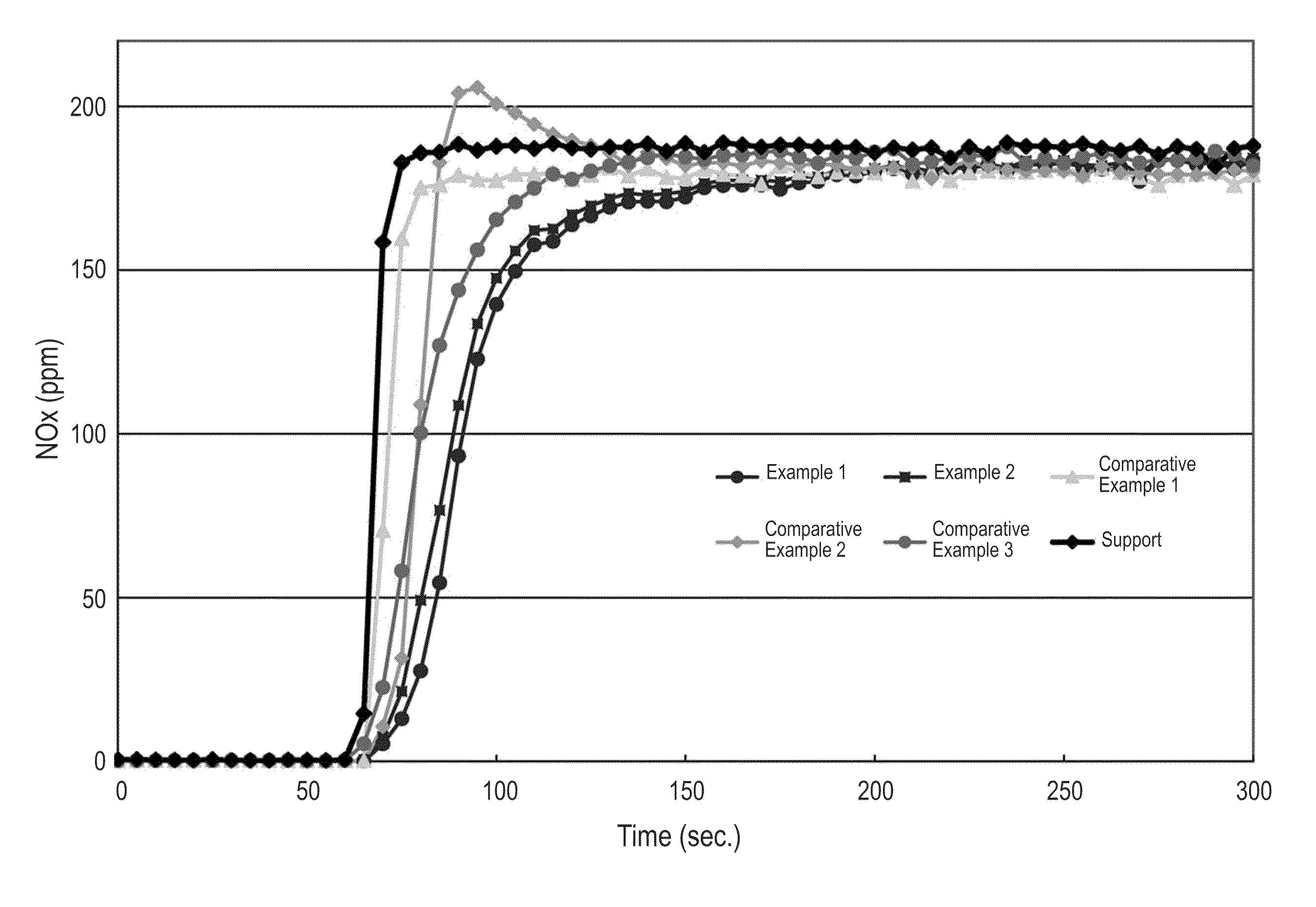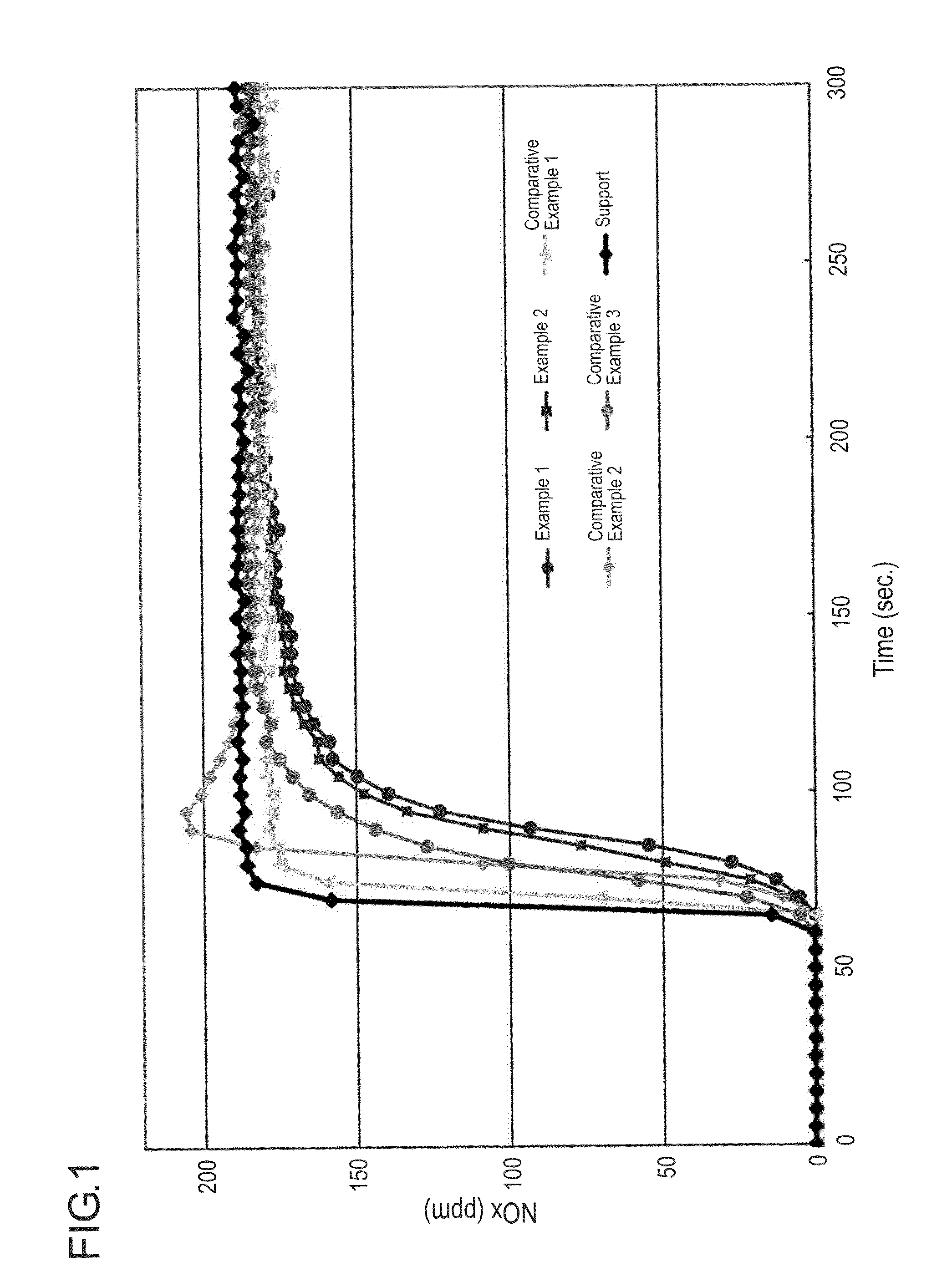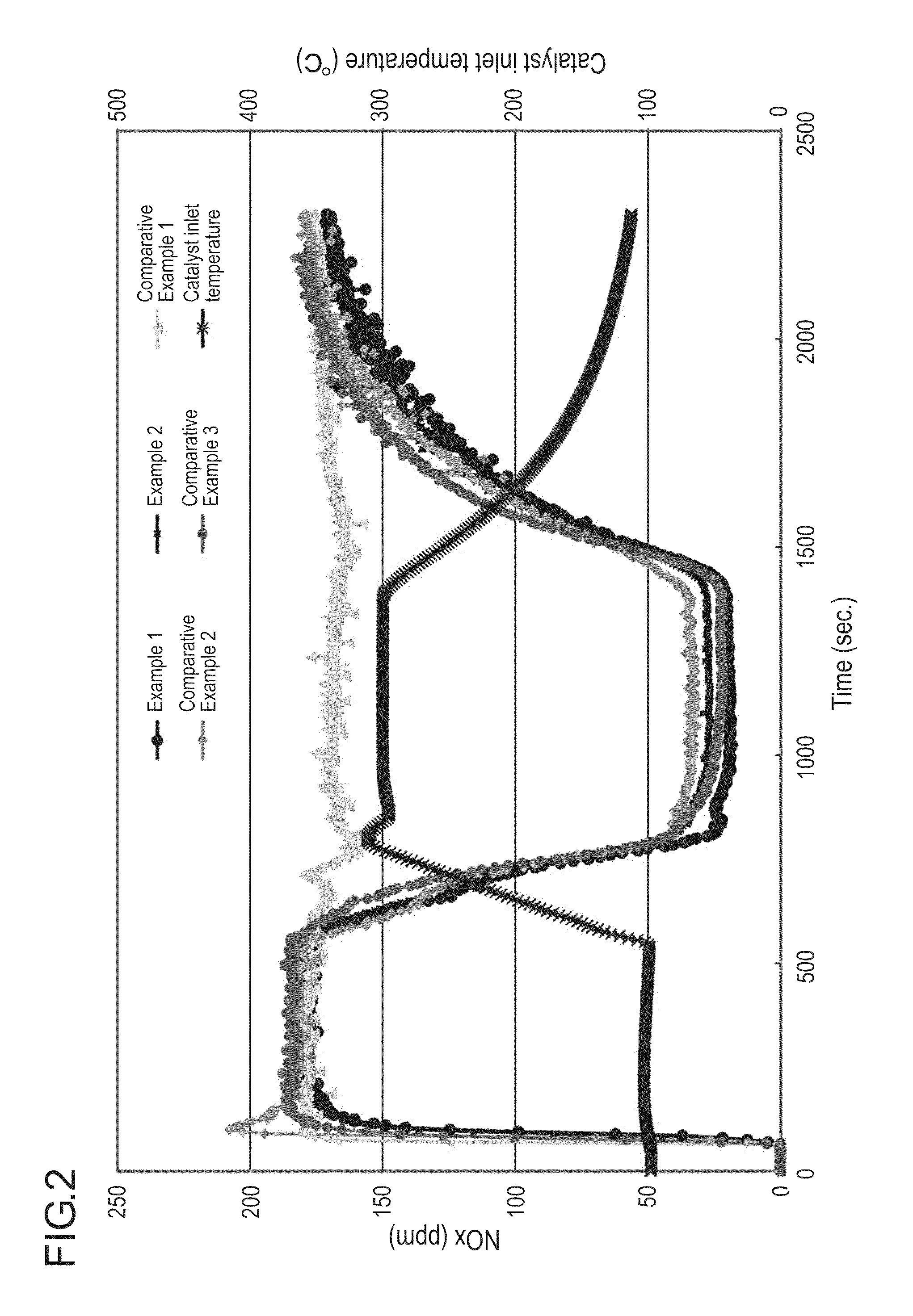Catalyst for removing nitrogen oxides and method for removing nitrogen oxides using the same
a technology of nitrogen oxides and catalysts, which is applied in the direction of physical/chemical process catalysts, arsenic compounds, separation processes, etc., can solve the problems of insufficient nitrogen oxide treatment technologies, difficult to remove nitrogen oxides utilizing aqueous urea solution, and insufficient treatment of nitrogen oxides in an exhaust gas
- Summary
- Abstract
- Description
- Claims
- Application Information
AI Technical Summary
Benefits of technology
Problems solved by technology
Method used
Image
Examples
example 1
[0063]After a suspension containing cerium oxide (BET specific surface area: 250 m2 / g, average particle diameter: 15 μm) (147 g) and silica sol (produced by Nissan Chemical Ind. Ltd., Snowtex O) (37 g) in water was sufficiently mixed, wet milling was carried out for 14 hours using a ball mill, to prepare slurry A.
[0064]Into the resultant slurry A, a cordierite-made honeycomb support (400 cells / inch2) having a size of diameter 24 mm×length 66 mm was dipped. Subsequently, after extra slurry A was removed, the support was dried by blowing in a horizontal state, followed by calcining at 500° C. for 1 hour, to obtain catalyst A in which the support is coated with the lower layer including cerium oxide and silica as catalytic component A. The resultant catalyst A was found to contain cerium oxide (95 g) and silica (5 g) per 1 liter of support, respectively.
[0065]Separately, β-zeolite (Zeolite beta produced by Zeolyst, SiO2 / Al2O3 (molar ratio)=25) (225 g) was poured to an aqueous solution ...
example 2
[0068]After a suspension containing cerium oxide (BET specific surface area: 250 m2 / g, average particle diameter: 15 μm) (101 g) and alumina (γ-Al2O3, BET specific surface area: 150 m2 / g, produced by SASOL) (51 g) in water was sufficiently mixed, wet milling was carried out for 14 hours using a ball mill, to prepare slurry A.
[0069]Into the resultant slurry A, a cordierite-made honeycomb support (400 cells / inch2) having a size of diameter 24 mm×length 66 mm was dipped. Subsequently, after extra slurry A was removed, the support was dried by blowing in a horizontal state, followed by calcining at 500° C. for 1 hour, to obtain catalyst A in which the support is coated with the lower layer including cerium oxide and alumina as catalytic component A. The resultant catalyst A was found to contain cerium oxide (75 g) and alumina (25 g) per 1 liter of support, respectively.
[0070]Separately, β-zeolite (Zeolite beta produced by Zeolyst, SiO2 / Al2O3 (molar ratio)=25) (225 g) was poured to an aq...
PUM
| Property | Measurement | Unit |
|---|---|---|
| temperature | aaaaa | aaaaa |
| exhaust gas temperature | aaaaa | aaaaa |
| temperature | aaaaa | aaaaa |
Abstract
Description
Claims
Application Information
 Login to View More
Login to View More - R&D
- Intellectual Property
- Life Sciences
- Materials
- Tech Scout
- Unparalleled Data Quality
- Higher Quality Content
- 60% Fewer Hallucinations
Browse by: Latest US Patents, China's latest patents, Technical Efficacy Thesaurus, Application Domain, Technology Topic, Popular Technical Reports.
© 2025 PatSnap. All rights reserved.Legal|Privacy policy|Modern Slavery Act Transparency Statement|Sitemap|About US| Contact US: help@patsnap.com



